The "Whispering Giant": timeless elegance, born too late. Bristol Britannia from Roden
If there should be a technical incarnation of the design elegance of the 50s, the Bristol Britannia would probably be a candidate for it. Her elegant lines are as inspiring today as they were then, and her nickname "Whispering Giant" also speaks of appreciation and quality. Nevertheless, Britannia's career could never live up to the high potential of the design.
A look at the design will tell the technically interested observer about the reasons for this: as a turboprop with straight wings, she had to compete against competitors such as the DeHavilland Comet, the DC-8 or the Boeing 707, which with their turbine engines, swept wings and high cruising speeds represented the future
This was not by chance: conceptually, Britannia was established before 1945. Even before its maiden flight in 1952, the BOAC ordered 20 aircraft; a number that was soon reduced to 15 under the signs of the new era.
Although the Bristol Britannia was "old hat" from the beginning and could not play the major role for which it had been designed, the model gained an excellent reputation. The four Proteus engines, Bristol's own development, were remarkably quiet, which resulted in the beautiful nickname "Whispering Giant".
Produced in the relatively small number of only 85 aircraft, Britannia's were then flown over an astonishingly long period of time by a considerable number of holders. It is also interesting to note that Britannias was one of the few aircraft types to be found in both West and East during the Cold War. Last but not least: a total of 20 Britannias were also taken over by the Royal Air Force.
The design was granted an afterlife in the form of Canadian licensed production: In 1954 Canadair acquired the rights to manufacture and develop the type. The resulting CL-44 Yukon and the CL-28 Argus sea reconnaissance aircraft continued to write the history of the Britannia quite successfully.
My model shows the "County of Fife", one of four Britannias flown at "Caledonian". The necessary markings are taken from a sheet of "26 decals", which was a good choice not only because of the quality of the material and the attractiveness of the model, but also because of the questionable nature of Roden decals.
I put the sample to the test and tried to use the kit slides at the beginning. After a few minutes it was clear: this will not work! In the link to the construction report, the interested person can look at pictures. Why Roden does not want to succeed in getting usable decal material is not clear to me. But as a model maker paying the purchase price you definitely don't feel taken seriously.
Otherwise I would like to give the kit good to satisfying marks; the building steps are also completed quite fast. I have added wiring to the undercarriage, and all antennas cast on the fuselage were removed and replaced by etched parts from the remains.
This project was a worthwhile test run in a new scale for me, which will certainly be followed by further models. I consider the construction of the Bristol Britannia a nice enrichment: for the showcase as well as for my modelling experience.
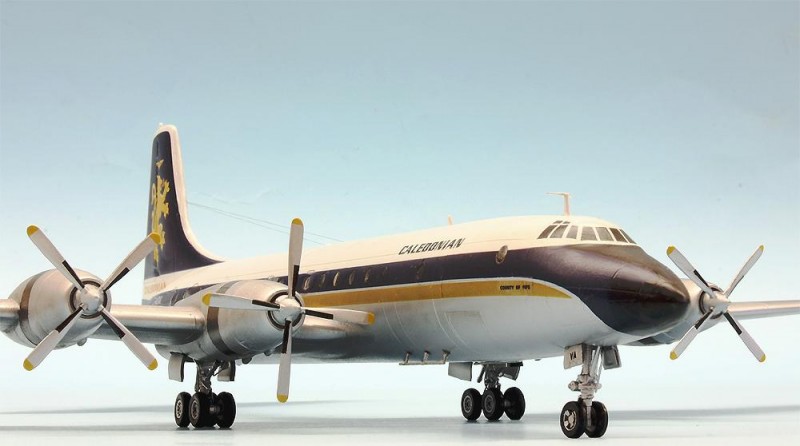
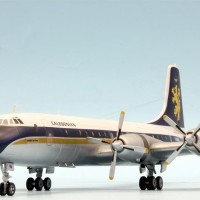

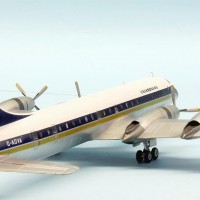
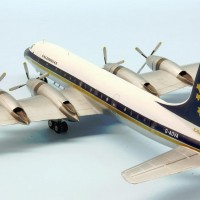

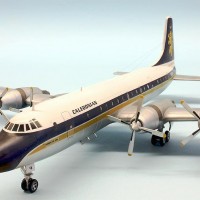
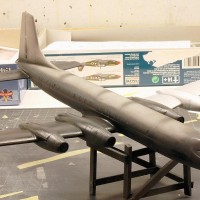
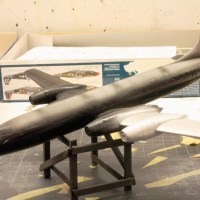
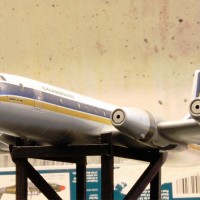

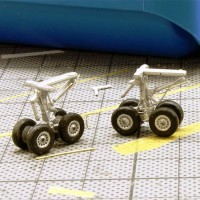
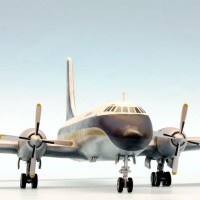
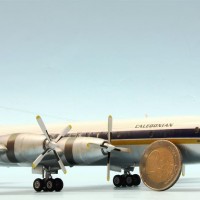


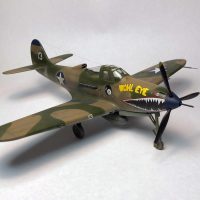
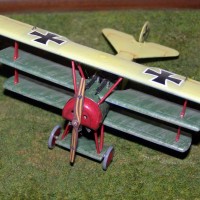
Beautiful job on that sleek bird! Congrats on a perfect repair to a frustrating problem!
That's a great job Roland. Excellent model. I had also issues with Roden decals in the past. Hopefully, they were not as complex in shape as yours here and I ended up using them, after a lot of effort. Roden have to improve on their decals quality, Their kits are not cheap and such drawbacks are not easily acceptable
All the best,my friend!
She looks beautiful! nice work. I've got a Roden C-119 waiting in the wings, you've got me apprehensive about the decals.
Really nice model Roland.
Somewhere along the line I have been lucky with Roden decals. But you'd best use Solvaset on them.
Sweet model, Roland. Too bad about the decals, but the 26 decals really made up for the miserable Roden decals, for sure.
Well done Roland! Thank you for the summarised history, and it was a good call to change the decals obviously. It looks great.
A really good finish of a lovely aeroplane.
Roden kits can be a bit of a mare to build, but they do cover types of aircraft poorly covered by other manufacturers. Never actually tried their decals, preferring Caracal decals for those Roden kits I have completed. Their decal sheets do look poor quality even just looking at as they come in the box.
Looks good Roland, nicely done.
Even with straight instead of swept wings it is a very sleek airliner and you have done a superb build.
Nice build. The Argus was a common sight in my area, way back when.
Beautiful model, it really is an elegant design. Splendid model Roland, when comparing with the 2€ coin I was baffled because it looks bigger in the other pics..always a sure sign of a well built model
Gorgeous!
My experience with Roden decals have been the same. The carrier film must be made of wax paper. Roland your investment in new decals and your rendering of the props, the landing gear and the paint job captures the looks and feel of this aircraft.
two thumbs up.